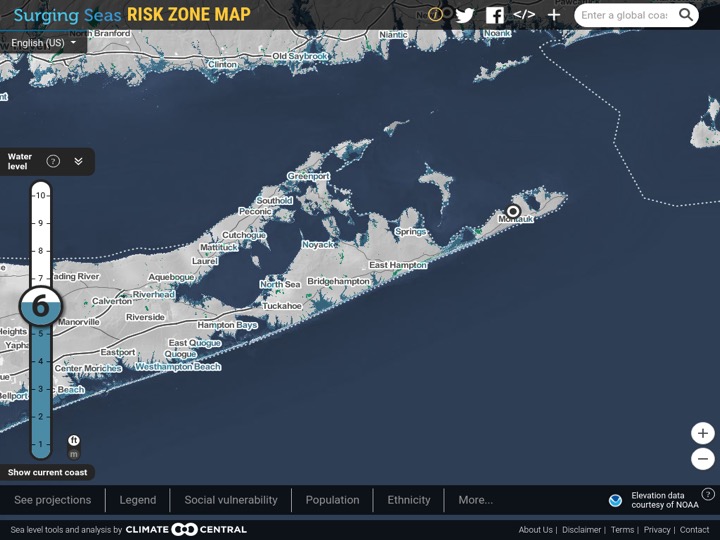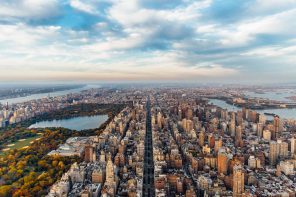How do you fight a rising tide? Coastal communities from Miami to Montauk are prepping for climbing sea levels and flood-triggering storms.
Katrina. Sandy. Harvey. Irma. These might be the names of your estranged aunts and uncles, but they’re also some of the worst hurricanes to hit U.S. coastlines this century.
Sandy, in particular, left its mark on New York—$72.2 billion in damage and 159 lives lost—but the next storm could be much worse. As marshlands and other natural storm barriers get swallowed up by the rising tide, coastal cities all along the seaboard become more susceptible to devastating storm surges and floods.

You don’t need to call Kevin Costner—we’re not looking at our own Waterworld (yet), but the predictions are pretty stark. Climate Central estimates six feet of sea level rise if current pollution is left unchecked, which would flood the homes of hundreds of thousands of New Yorkers and effectively isolate Montauk as its own island.
Curbing climate-change-causing emissions is the only way to stop sea level rise, but we have a lot more options when it comes to making that sea level rise less devastating for coastal cities.
The Nature Conservancy has been working in New York to tackle these issues for 60 years. Suffice it to say, they’ve come up with a few good ideas on protecting coastal habitats and urban communities.

Man + Nature
Based on a case study of Howard Beach in Queens, The Nature Conservancy found that a “hybrid approach” of preserving natural habitats, like marshes, and reinforcing coastlines with man-made defenses was the best way to reduce storm damage.
In Howard Beach alone, this hybrid conservation strategy could save as much as $244 million in a Sandy-like, 1-in-100-year storm event.

Good storms?
In an interview, Nature Conservancy Senior Coastal Scientist Nicole Maher brought up an interesting paradox in what we thought we understood about super storms and sea level rise. She expected to see a lot of marsh damage after Hurricane Sandy, but the storm had actually shifted the sand in such a way that it elevated the marshes, helping the protective wetlands keep pace with sea level rise.
More hurricanes probably aren’t the solution to sea level rise, but it’s important to understand how they shape our coastlines—for better and for worse.

Community Planning
How do you prepare for sea level rise as a homeowner? As a business owner? As an elected official? You have to work, and plan, together.
To help community stakeholders talk to each other and build community-level strategies for coping with New York’s rising tides, The Nature Conservancy hosts Community Resilience Building Workshops.
One of the main threats to New York’s communities is flood damage, which is why The Nature Conservancy has also launched a Flood Smart Communities program. They help towns generate extensive flood maps and host community workshops in order to figure out what aspects of their communities are most vulnerable to floods. Preventing flood damage is especially important for small businesses at the heart of a community, since 40 percent of these stores never reopen if they’re forced to close due to flooding.

We all float on
It’s pretty hard to get anywhere in a flood—for humans, but also for fish and other wildlife. If culverts under roads are too small or poorly designed, they can lead to worse flooding and they can prevent fish from traveling to spawn.
The Nature Conservancy is working on improving New York’s culverts to keep the fish, commuters and fishermen happy, even as the waters continue to rise. With these ideas and many others, The Nature Conservancy is stemming the tides of climate change and keeping our coasts safe.








